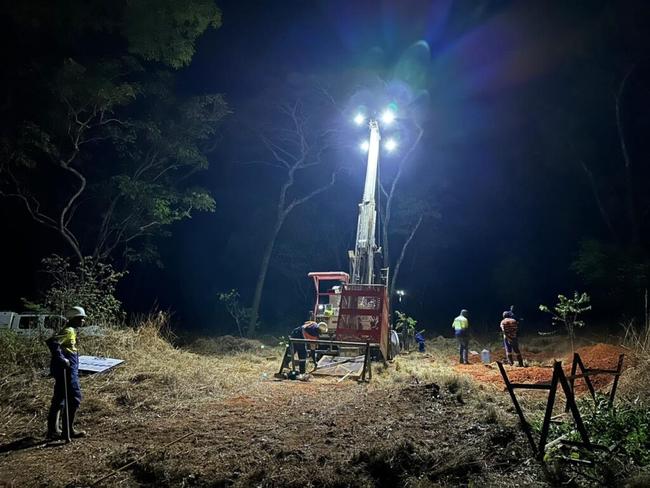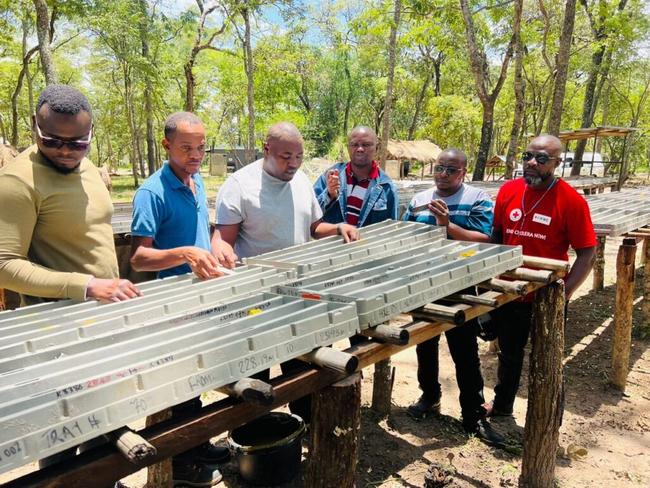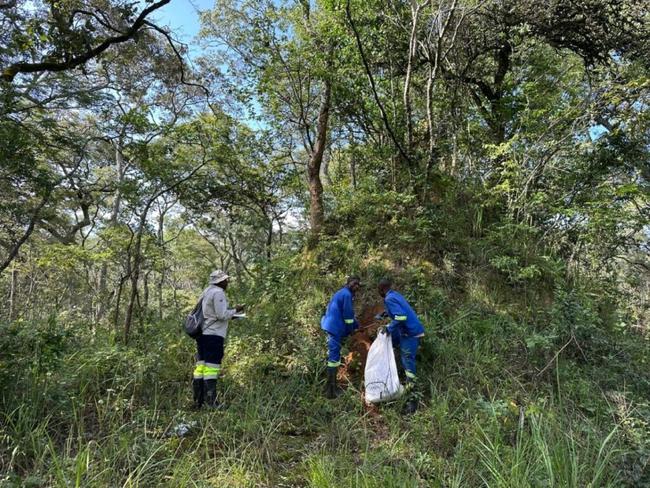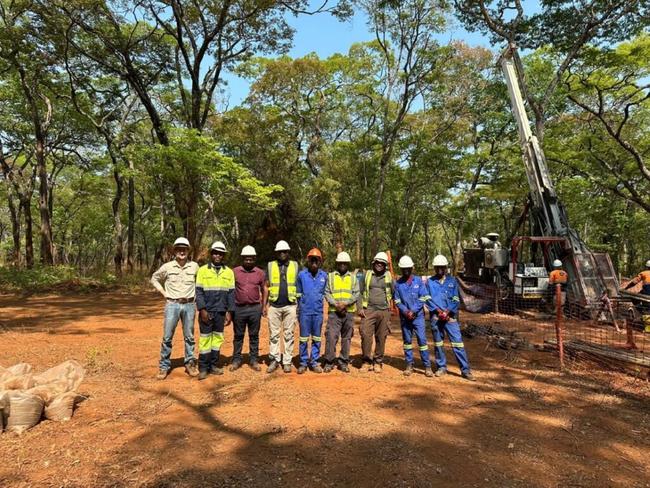Prospect mineral resource timing perfect in hot copper environment
In a heating copper environment Prospect Resources is heading toward the try-line with its Mumbezhi project in Zambia.

Prospect times to perfection its Mumbezhi project, which has clear indicators of massive scale potential
With growing demand for copper Prospect is confident in the future of Mumbezhi, now with granted mining licences
Leans heavily on regionally proven field exploration including geophysical surveys (specifically IP), termite hill geochemical sampling and mapping of copper flowers
The company has an expert team proven in Africa, with the Arcadia lithium transaction setting records in Zimbabwe for largest private sector transaction
Special Report: Copper is a great conductor and its use as a critical electrification metal is creating unprecedented demand, which is why Prospect Resources is stepping up to the plate.
The ASX-listed explorer is confident its Mumbezhi Copper Project in the world-class Central African Copperbelt region of north-western Zambia has a role to play in future supply of the red metal.
In a short period since acquiring the project in April 2024, Prospect has set the stage to realise Mumbezhi’s potential and believes 2025 will be transformational with significant drilling planned to build on the existing copper resource inventory.
From July to mid-December last year the company made good use of an extended dry season to demonstrate the potential of Mumbezhi with fieldwork, induced polarisation (IP) surveys and drilling leading to a maiden resource for the Nyungu Central and Kabikupa deposits, and the grant of a pair of large-scale mining licenses.
The resource includes 87Mt at 0.5% Cu at the 43% indicated Nyungu Central deposit and a fully inferred 20Mt at 0.5% Cu for Kabikupa, both estimated at a 0.2% cutoff.
With 515,000t of contained copper resources under its belt from the two deposits, extensive drilling is planned for the rest of this year.

Resource growth potential
“We've got some really good exploration targets to get our teeth into that we didn't have this time last year,” PSC corporate development manager David Broomfield said.
Prospect is confident of resource growth and a hint of this is provided in an Exploration Target ranging from 420Mt to 1050Mt and grading between 0.4-0.6% Cu.
“As it stands, I'm pretty convinced that our lower limit exploration target of 420Mt is actually eminently achievable - that is, four times what we have achieved so far,” Broomfield said.
Significant technical studies are also underway, particularly metallurgical work, which will give stakeholders confidence in the veracity of the project to produce saleable copper with the company aiming to complete a scoping study towards the end of this year.
Also providing confidence is the success achieved by its operating neighbours, Barrick at Lumwana and First Quantum at Sentinel and Kansanshi. Lumwana is about 30km from Mumbezhi and has about 2Bt of copper resources with at least 500Mt of reserves and a mine plan that goes out to around 2056.

Prospect managing director and CEO Sam Hosack said in combination with the exploration target for the broader Mumbezhi Project, the resource demonstrated the strategic scale of the potential opportunity at Mumbezhi, “something I have always had high conviction about at this copper asset.”
He said the resource represented a huge milestone in the de-risking pathway for Mumbezhi but was only the beginning of what Prospect planned to deliver.
As such, the company is focusing on growing the Nyungu Central and Kabikupa deposits with second phase drilling commencing in the June quarter of 2025 as well as comprehensively testing significant regional copper prospectivity lying across the tenure, which includes three high-potential IP anomalies interpreted immediately north of the Nyungu Central deposit.
Flowers and termites
Induced Polarisation (IP) surveys have proven effective and relatively inexpensive for finding copper targets and are used by Prospect, and many other explorers, to identify potential mineralisation below surface.
However, there are a couple of other surface exploration methods fairly unique to the copperbelt region that assist in locating potential targets - copper flowers and termite mounds.
Copper flowers are a botanical indicator of copper, said Broomfield. “The plants are rare but can survive high levels of copper, which most plants can't, and they grow on top of copper-rich areas, often pointing to what’s underneath.”

Sampling of the termite mounds is effective because copper is a mobile element and there is often evidence of deep-lying copper in, and below, the mounds, which are very prevalent throughout the region.
“They are bigger than those in Australia, up to eight metres high, and some of them could be a thousand years old,” Broomfield said.
“But the perfect thing about the termite mounds is that they are somewhat like an iceberg. If they are eight metres high, they can go down more than 30 metres into the substrate and the termites bring damp soil to the surface.
“It is very cheap exploration to be able to test a termite hill for copper because it's a proxy in situ sample of what might be hiding beneath.”

Zambia on the move
The Central African Copperbelt is one of the largest and most prolific mineralised sediment-hosted copper provinces globally, with Zambia standing as a large copper producer but is not resting on its laurels.
Zambia was at one time second in the world for global copper production behind the DRC and is now eleventh, but is taking serious steps to climb back up the ladder.
The country aims to lift annual copper production from 820,000t to 3Mt by 2031, which is one reason explorers like Prospect are set to attract support from the government in the drive toward production.
This has already been revealed by the company gaining approval in March 2025 for two key mining licences.
“The grant of these licences represents another major milestone in our journey at Mumbezhi, delivering the inherent credibility attached to this more advanced and secure form of tenure,” Hosack said.
“This milestone also aligns with Zambia’s long-term vision to cement its position as a leading global copper producer, reinforcing the nation’s ambition to grow copper output to 3Mt annually.
“With the licences in place, Mumbezhi transitions into a fully permitted asset, opening the path for further resource expansion, future mine development, production planning and strategic financing discussions.”
The nation is interested in attracting new investors and is counting on the mining sector to drive economic growth in the wake of its worst drought in living memory last year.
With the world’s hunger for copper, finding good projects in stable jurisdictions has proven a challenge, but identifying such an asset adjacent to world-class producers in Zambia is a big tick.
Being an established mining region, there is no shortage of infrastructure in northern Zambia and a new rail corridor, the Lobito corridor, is being planned to provide better access to the EU and US with which Zambia is developing trade agreements.
The existing rail corridor transits through to Mozambique and Broomfield said this was well used by the Chinese in particular, but the new corridor through northern Zambia into DRC through to Angola and the port of Lobito on the Angolan Atlantic coast would benefit commodity exports to Europe and North America.
Done it all in Africa
As well as the success of its exploration techniques and the quality of its tenure, another point of difference for Prospect is the team assembled and that team’s experience in Africa.
Importantly, the team possesses deep, proven expertise in efficiently exploring for, rapidly advancing and successfully delivering world-class mineral projects in Africa. It has been there and done it all before in Africa.
This team discovered, developed and eventually took the Arcadia Lithium Project in Zimbabwe to a Bankable Feasibility Study. Timing within the lithium sector made this a very valuable asset, which was sold to Huayou Cobalt in 2022 for US$378m at the height of lithium pricing.
Prospect aims to repeat this at Mumbezhi but become a miner in its own right. There is significant ability within the current board and management to achieve the goal of developing and eventually mining and processing the copper, if economic to do so.

Broomfield said unlike other publicly listed companies operating in Africa, beside a small corporate office in Perth, all other PSC staff lived in Zambia, South Africa or Zimbabwe, which enabled the company to focus significant effort, time and attention on Mumbezhi.
“Our MD & CEO Sam Hosack resides in Harare, a 1-hour flight to the Zambian capital, whilst chief geologist Roger Tyler, who has worked throughout the Central African Copper Belt, lives in Cape Town.
“Early on, Mwelwa Manda was appointed Zambian country manager and this has proved a masterstroke, employing a seasoned investments and corporate finance professional from the Zambian private sector, and based in Lusaka.
“All other staff are either Zambian or Zimbabwean nationals.
“PSC is determined not to make the mistake of companies who try, often unsuccessfully, to run and develop African projects and businesses from afar and are then often surprised when day to day activities go off the rails, often with a substantial price tag or more crucially, impeded progress.”
Towards development
A project of this scale will need some serious dollars thrown at it for development up the curve. Strategic partnering is one way of achieving this without inhibitive share price dilution. PSC currently only has about 573 million shares on issue, so this is an option.
“A like-minded partner could supply the capital required to advance drilling and feasibility studies over the next two years or so at Mumbezhi, leaving PSC well-placed to get on with what we do best, professionally developing mineral projects,” Broomfield said.
With this expertise, Prospect aims to take Mumbezhi as far as it can, although the decks will need to swell to ensure it has the firepower to complete all the associated exploration, technical development and financial studies to derive the most optimal path to production.
Importantly, the company takes its legal, environmental and social obligations very seriously as an ASX-listed entity and it makes no difference where it works, in this case, a remote region of sub-Saharan Africa, to uphold these.
Growing copper demand
Adding to the momentum Prospect has at Mumbezhi is growing demand for copper as an electrification metal.
Broomfield said EVs used a lot more copper than traditional combustion engine cars and copper was also needed in the wiring of wind turbines and solar energy panels, not to mention in the transmission of this energy into the electrical grid.
“My understanding of the copper market is that it's actually the AI revolution that will begin driving the biggest demand in the future - the super computers are the ones that are going to be the real draw on the copper supply,” he added.
The hot property of Prospect along with the company’s track record, its progress to date and copper market fundamentals have resulted in Canaccord Genuity Capital Markets giving the company a ‘Speculative Buy’ rating.
“Our production scenario had envisaged a 5Mtpa operation producing +20ktpa of copper over 20 years and the maiden MRE now underpins that,” Canaccord said.
“However, given the significant investment in processing capacity proximal to Mumbezhi, we highlighted the potential value of this material if it were processed at the neighbouring Sentinel Copper Mine.
“We ran two scenarios processing 10-20Mtpa (50-100ktpa copper) which showed an incremental US$439-607m of value could be created for the Sentinel operation.
“Now that the mining licenses are in place there is a solid framework to negotiate any potential partnerships.
“PSC plans to deliver a scoping study in the December quarter this year, which could further highlight the value of the tenement area.”
This article was developed in collaboration with Prospect Resources, a Stockhead advertiser at the time of publishing.
This article does not constitute financial product advice. You should consider obtaining independent advice before making any financial decisions.


